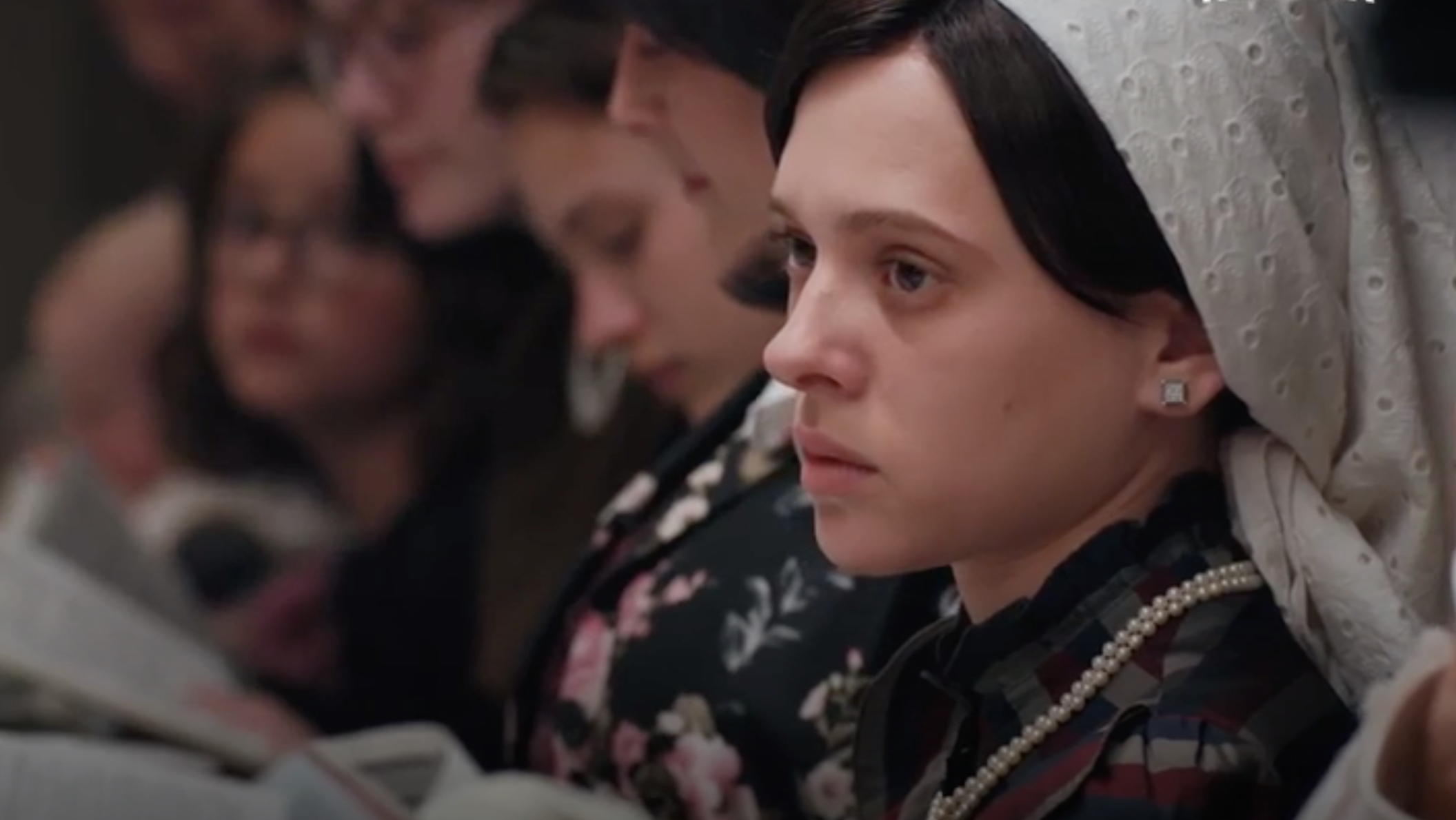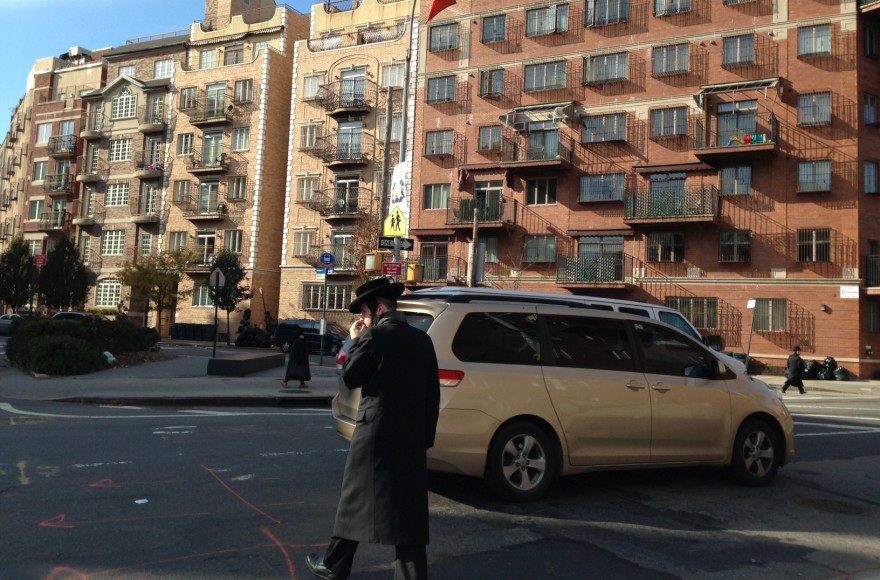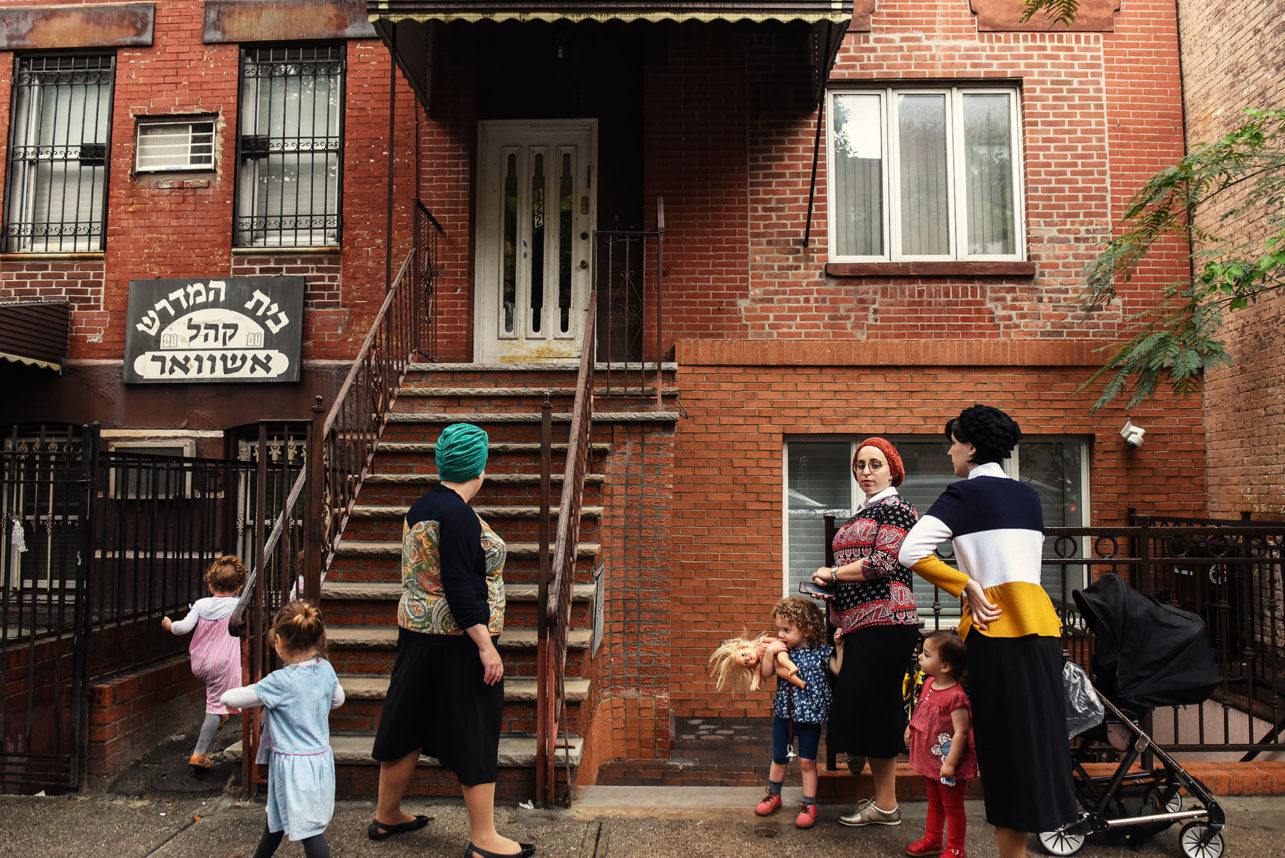 Shira Haas in “Unorthodox”; Photo courtesy of Netflix
Shira Haas in “Unorthodox”; Photo courtesy of Netflix When my Facebook feed first filled with reviews of Netflix’s “Unorthodox,” I felt no urge to watch it. The well-worn genre of predictable coming-of-age stories about the glory of secularism dwarfing one-dimensional Hasidic characters didn’t spark my interest.
Two things changed that. The show kept drawing increased attention, mostly in secular Jewish publications and discussion groups. This coincided with penetrating media scrutiny of the Hasidic community in the wake of the COVID-19 pandemic. I was finally compelled to watch the series in my quest to understand what motivates Jewish writers, filmmakers and journalists to inspect this community with a magnifying glass time and again, when all it asks is to be left alone?
The series provided little food for thought. With all the depth of cardboard, the dumb-witted husband, the overbearing mother-in-law, the nosy neighbors, and the boorish cousin came together in a familiar caricature. Though the Hasidic communities are situated just miles from their secular cousins in Brooklyn, their on-screen treatment resembled the colonialists’ impressions of primitive tribes in Papua New Guinea.
Though the Hasidic communities are situated just miles from their secular cousins in Brooklyn, their on-screen treatment resembled the colonialists’ impressions of primitive tribes in Papua New Guinea.
But then the behind-the-scenes story of “Making ‘Unorthodox’ ” both sharpened the question and provided a clue. In this short segment, the team described the creation process. In painstaking detail the filmmakers talked about their research trips to Brooklyn, in which they analyzed every bit of Hasidic life. This research informed every element of the show: building exteriors, apartment interiors, costumes, street scenes, wedding rituals and facial expressions.

Yet one piece of Hasidic life was glaringly missing from the description. The mindset. At no point did the creators discuss an attempt to understand or explain what could possibly motivate tens of thousands of individuals to close off in insular communities and reject the trappings of modernity, despite the easy access.
At no point did the creators discuss an attempt to understand or explain what could possibly motivate tens of thousands of individuals to close off in insular communities and reject the trappings of modernity, despite the easy access.
By failing to ask this question and project this understanding onscreen, the series’ creators ended up passing off a lifeless shell for the real thing. The Hasidic community of “Unorthodox” resembles flesh-and-blood Hasidim as much as a cadaver resembles a living human being.
While filmmakers toiled to create hundreds of fake-fur shtreimels, they didn’t take the time to understand the thoughts of the shtreimel-wearers. They did not delve deep enough to hear about the Hasidic teaching of Godliness permeating every facet and moment of existence. They missed the opportunity to learn about the overarching Hasidic goal: exercising free will to uncover Godliness in every interaction with the physical world.
While filmmakers toiled to create hundreds of fake-fur shtreimels, they didn’t take the time to understand the thoughts of the shtreimel-wearers.
As the series’ creators yet again falsified and fetishized Hasidic sex as a lifeless affair in the baby-making process, they failed to learn about the Jewish perception of vibrant and healthy marital intimacy as the pinnacle of religious holiness. The painfully fake scenes of fully-clothed sex, and the farce of a husband not realizing after a full year of marriage that he should have kissed his wife (not to mention the protagonist’s miraculous cure of vaginismus in the bed of a non-Jewish lover) left me wondering whether the filmmakers truly did not take the time to fact check these urban myths.
The series creators’ painstaking efforts to carefully mirror the external trappings of a Hasidic lifestyle juxtaposed against their complete failure to paint the inner world of a Hasid presented a paradox. Authors, artists and journalists are some of the most intellectually curious people in the world. Their work centers on developing deep understanding and empathy for the people whose stories they are telling. So why is it that “Unorthodox” along with its numerous predecessors in print and on the screen have failed to delve beyond stereotypes and share the real story?

The answer came in the opening credits. The graphic treatment of the title accurately represented everything the series and the entire genre are trying to do. The very name “Unorthodox” suggests a break with tradition. But the graphics, with a line struck through the title, is an attempt to obliterate Orthodoxy.
The supposedly romantic story of a young woman running away from the tyranny of a Hasidic “cult” is just a play out of the secular Jewish aspiration to break with thousands of years of Jewish tradition. In the words of Esty, the protagonist, “God expects too much of me.” And so, to escape this burden, some Jewish artists and writers stoop to vilifying Orthodox Jews, who have the audacity to grapple with God’s expectations.
It is clear that Esty is a troubled young woman with a complex past and a medical condition. Her escape is an attempt to find healing and belonging in her unique personal and family situation, not a negative reflection on hundreds of thousands of Hasidim. Yet filmmakers have chosen to project their own prejudices, insecurities and aspirations onto this woman’s story. The series plays out their hidden wish for Hasidim to “see the light” and trade the oppressiveness of Williamsburg for the freedom of cosmopolitan Berlin.
The series plays out their hidden wish for Hasidim to “see the light” and trade the oppressiveness of Williamsburg for the freedom of cosmopolitan Berlin.
And so, while the Hasidic communities are content to live their lives and be left alone, so many of their secular brothers and sisters feel triggered by the very existence of the Orthodox. As a result, they produce a litany of creations dragging out and projecting the marginal stories of abuse, dysfunction and impropriety (which exist in every society) onto the entire Hasidic community. By doing so, they hope to quiet the internal conflict and silence the little voice of the Jewish conscience within.
Such art is both unfair and unconstructive. Perhaps, if Jewish artists were to take the time to really understand Hasidism and their mindset, they might discover inspiring teachings and traditions that have enriched and empowered our nation for 3,000 years.
Perhaps, instead of playing out yet another story of a wandering Jew, we could all come together around our shared humanity, values, traditions and culture.
None of which require a trip to Berlin.
Leah Aharoni is the chief people officer of Israel’s Channel 20 TV.






















 More news and opinions than at a Shabbat dinner, right in your inbox.
More news and opinions than at a Shabbat dinner, right in your inbox.